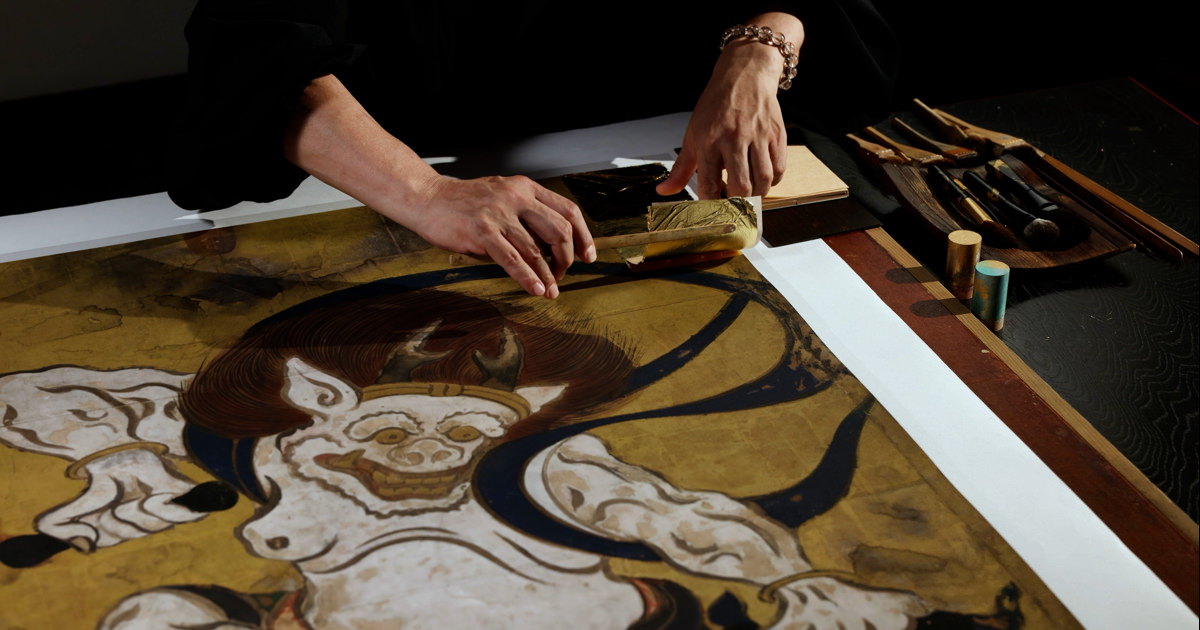Facsimile of a work in the collection of The Metropolitan Museum of Art. May not be further reproduced or resold. The Metropolitan Museum of Art, Purchase, Louisa Eldridge McBurney Gift, 1953(53.7.1-2) Photograph © 1993 The Metropolitan Museum of Art.
These images are based on the high resolution facsimile produced by the Tsuzuri Project. Unauthorized copying, duplication, or transfer of these images is strictly prohibited.
Eight-Planked Bridge
High-resolution facsimiles
- Material
- printed, gold on washi paper
- Period of creation
- Tsuzuri Project Stage 1 2007–2008
- Recipient
- Kyoto City
Original
- Artist
- Ogata Korin
- Historical era
- Edo (18th century)
- Material
- ink, color and gold on washi paper
- Medium
- Pair of six-fold screens
- Size
- Each screen H179.1 × W371.5 cm
- Collection
- The Metropolitan Museum of Art
Description
This folding screen is considered one of the best works of Korin, which, along with Waves at Matsushima, painted by Sotatsu (Freer Gallery of Art), are revered in the US as the two greatest works of the Rimpa school. The painting is gallantly bright, causing the patches of irises in green and purple and the paled black bridge to levitate off the gold background. The brilliant composition and contrasting colors captivate the viewer's senses at first sight. Sharp tensions are dramatized by the weaving path of bridge crossing through the rhythmically lined flowers. A technique called "tarashikomi" is heavily used to paint the bridge wherein a second color is poured over the undried first color. This lends a soft touch to the otherwise aggressive geometry of the bridge. Korin painted this work in his later years, a decade after painting Iris laevigata, now a National Treasure.




